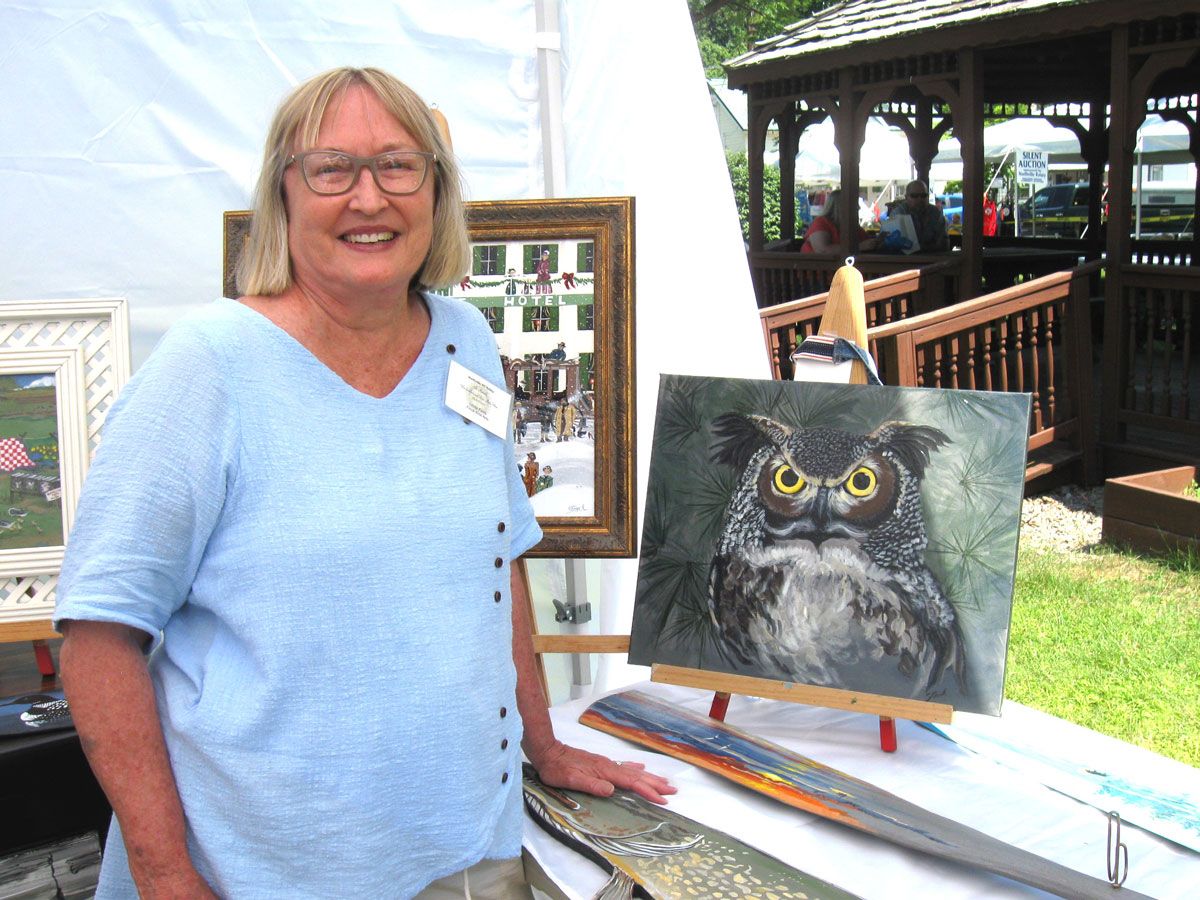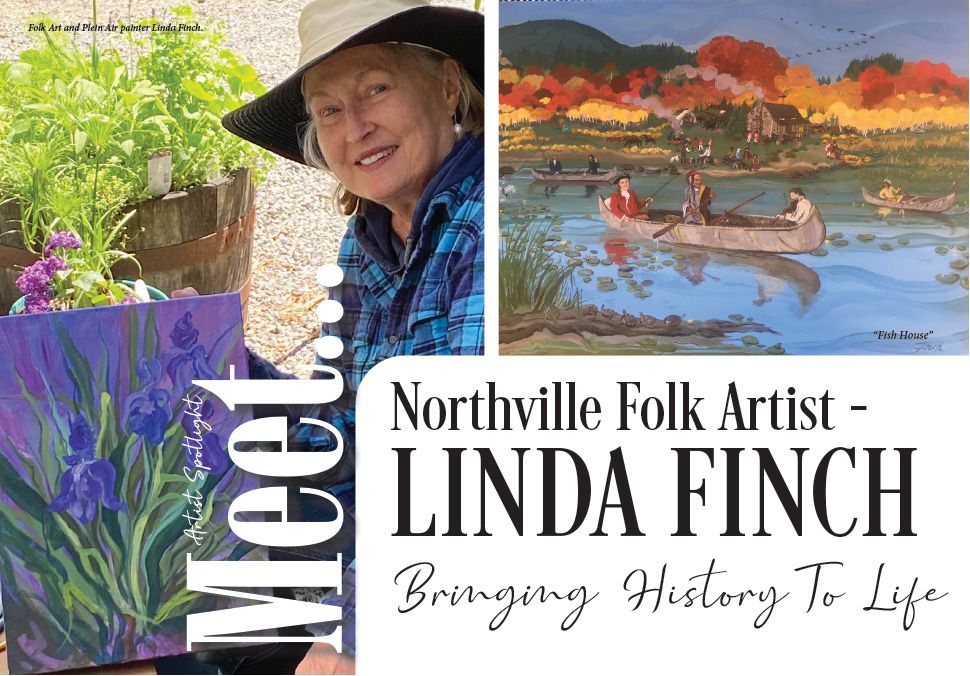
Written By WENDY HOBDAY HAUGH | Photos Provided
Adirondack folk artist and Sacandaga Valley aficionado Linda Finch is every bit as impressive a storyteller as she is an artist. She grew up listening to her elders’ vividly detailed accounts of life in the Sacandaga Valley prior to the 1930 creation of the Conklingville dam. Over a dozen small communities lay within the proposed reservoir’s path, and Finch’s own great-great-grandmother, grandparents and mother were among those displaced, forced to leave their beloved homes and farms to make way for a reservoir that would ‘serve the greater good’ of downstream New Yorkers.
Having grown up in Gloversville and spent every childhood summer lakeside in Northhampton, Finch has long been fascinated by the valley’s unique history. After earning an undergraduate degree in Art from SUNY New Paltz, she earned a graduate degree from Cornell University’s Industrial Labor Relations School. An adventurous traveler, Finch lived in California, the Southwest, and Chesapeake Bay, MD, before finally settling in Sullivanville (near Ithaca) and working for the State Education Department. After retiring, she moved to St. Croix in the U.S. Virgin Islands, where she owned a banana farm.
Upon returning to Northville in 2017, Finch noticed that, with the passage of time, fewer and fewer residents and summer visitors were aware of the Sacandaga Valley’s rich and storied past. Determined to preserve its history by sharing the wealth of local information she’d acquired over her lifetime, Finch set about painting a series of scenes depicting key places and events from the valley’s past. Initially, she painted a triptych (three related works), after which a grant from the New York State Council for the Arts partially defrayed the expenses of eight additional paintings. But the artist soon realized that she had many more stories bottled up within her, begging to be told.
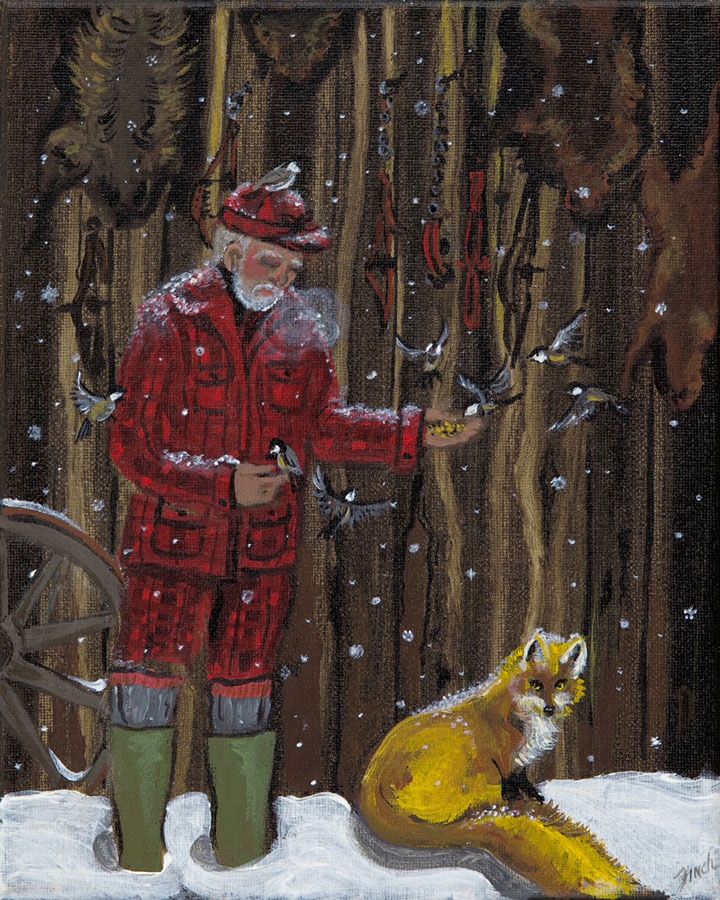
"Grandpas Fox"
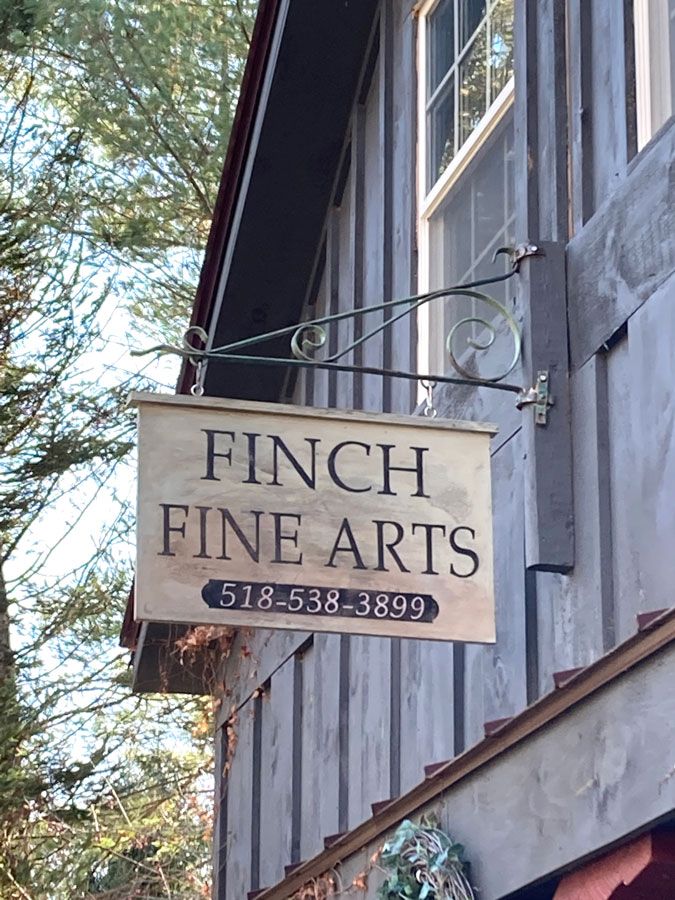
“As with any developing community,” Finch says, “there’s always a share of heartache. But in the case of the Sacandaga River Valley, there’s a lot more than usual. When I paint my Sacandaga scenes, I’m not just painting. I’m documenting a time period. With every painting, I include a historic explanation. It’s cathartic for me to share the history and get it all out there for others to understand. I think of myself as a visual storyteller. Having spent a large part of my career working for the State Education and Labor Departments as a marketing rep for a nine-county area, sharing information is a part of who I am.”
The unexpected arrival of a pandemic gave Linda Finch the perfect opportunity to isolate at home, hunker down, and paint nonstop. “My nemesis is boredom,” she says, “so being homebound with such a big project was a godsend.” Before starting any new piece, she clearly visualizes every last detail. “By the time I begin, all the details are done, finished in my head. All I have to do is fill them in. The hours just fly by when I’m focused and lost in the zone.”
To date, Finch has completed 24 historic Sacandaga Valley folk art scenes, but fresh ideas for additional pieces are always brewing. The artist researches extensively before undertaking a painting, often spending months gathering pertinent and intriguing backstory from old maps, postcards, newspapers, and books. The facts, figures, and old photographs unearthed by Finch and her researching helpmates—including husband Henry Fletcher, daughters Anna and Amanda (both artists themselves), several history buff friends, and seven local historical societies—provide the grist for each of her local paintings.
Using eye-popping carnival colors, Finch creates works so vibrantly detailed you could spend hours studying just one and still not catch every nuance. Available as giclee prints on presentation paper or canvas, every scene provides a visual feast as well as a fascinating history lesson. On her website, the artist narrates the stories behind many of her Sacandaga paintings in a video titled, “Linda Finch Adirondack Folk Art Exhibit.”
Although well-known today as a folk artist, Finch is actually an Impressionist painter at heart. From June through September, she organizes and leads plein air sessions (painting outdoors in daylight) at local scenic sites, offering artists an opportunity to pursue their passion beyond their studio walls in the presence of other like-minded individuals. In 2004, Finch turned to folk art painting in earnest when—in response to an environmental issue of critical importance to her then-hometown of Sullivanville—her civic and artistic focus shifted to fracking. After witnessing first-hand the dire effects of fracking on her rural community, Finch created 17 paintings to more fully educate people about the disturbing effects of the process. In doing so, she referred to herself as “an environmental activist, trying to squeeze 1,000 words into every picture.”
Ultimately, Finch’s fracking series garnered lengthy exhibits at Cooperstown’s Fennimore Museum and the Bennington Museum in VT. “It was so freeing to not be tied down to realistic perspective,” she points out. “I was able to pack so many details into each scene.”
In 2017, when the idea for her upcoming Sacandaga Valley triptych emerged, Finch realized that the folk art genre would be a perfect fit for the project. “My folk art is visual storytelling that conveys a specific sense of time and place,” she explains. “It echoes the culture of the region and is a tribute to people past and present who live in the Sacandaga Valley. It differs from what people usually consider folk art. It’s not saccharine or memories re-imagined, but often crass and somewhat edgy. It’d make Grandma Moses cringe,” she adds with a smile.
Linda Finch has said that her extensive portfolio of Sacandaga times-gone-by won’t exceed 30 pieces. But, given the area’s rich history and the artist’s dedication and passion for research, the final count may be even higher—only time will tell. In the meantime, one thing’s for certain: Finch’s efforts to preserve the region’s unique history through visual storytelling are warmly welcomed and much appreciated.
To see more of Linda Finch’s work, visit www.finchfinearts.com or contact her at
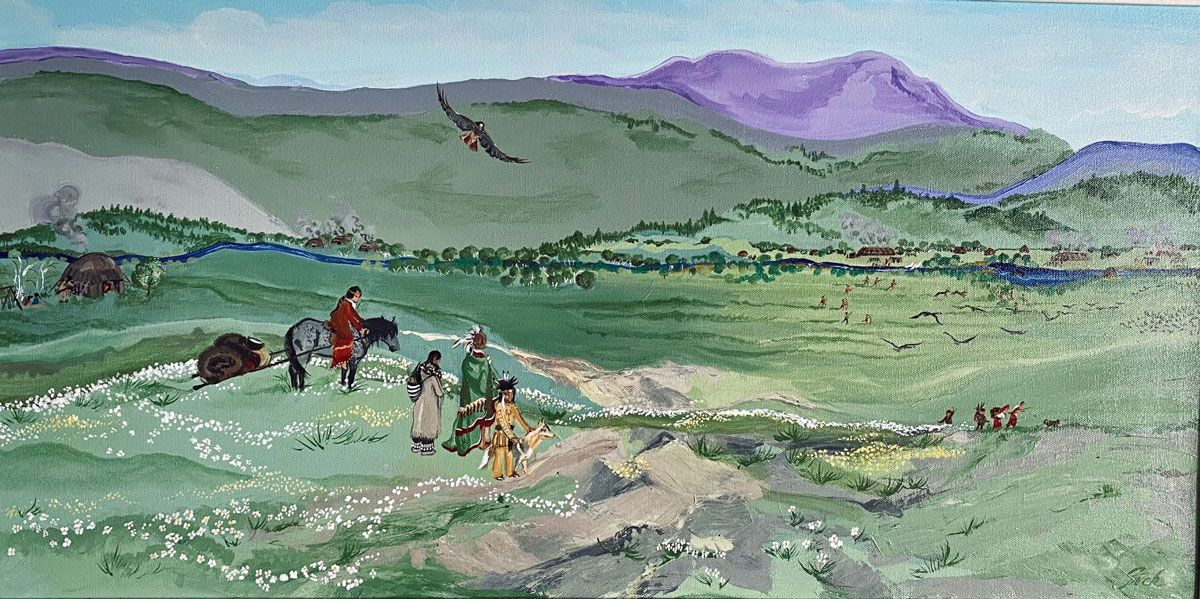
(Above): "Summer Hunting Ground"
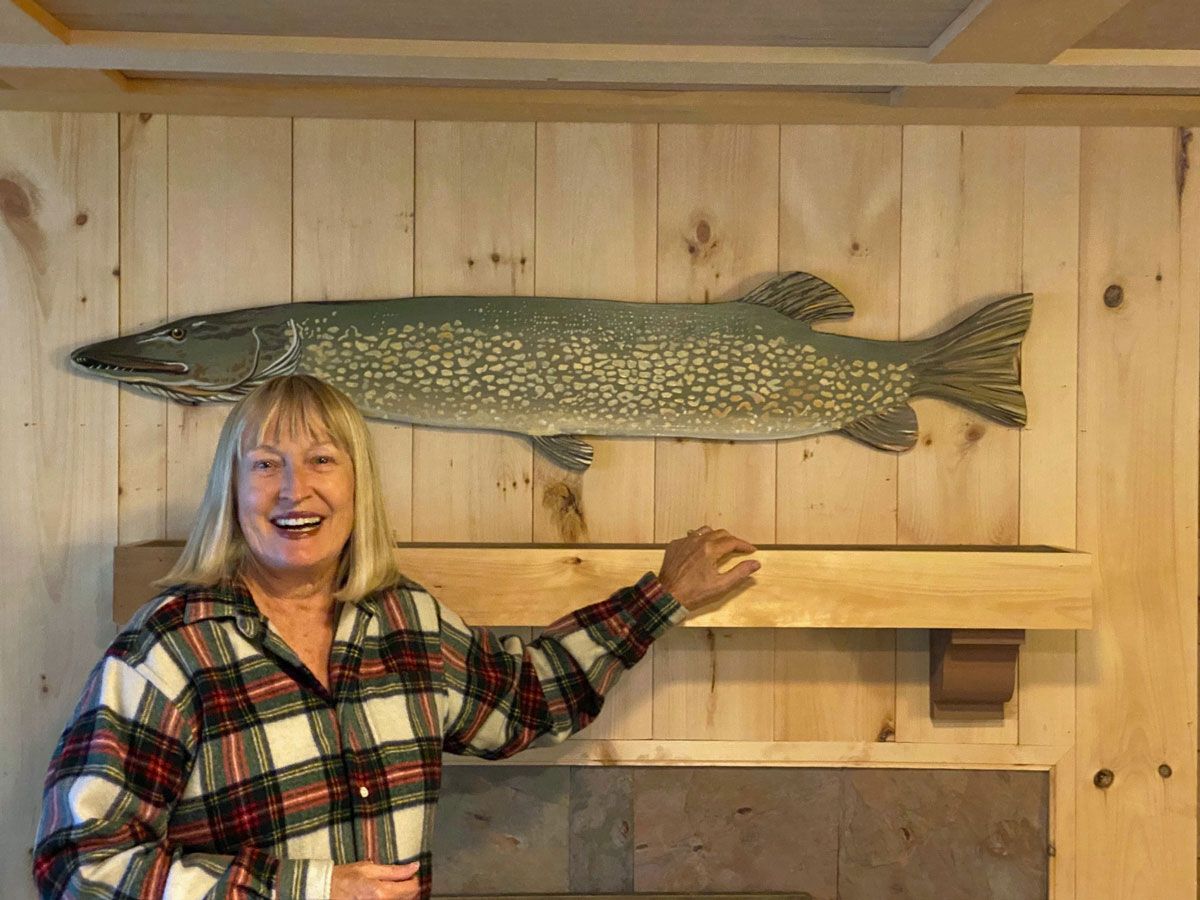
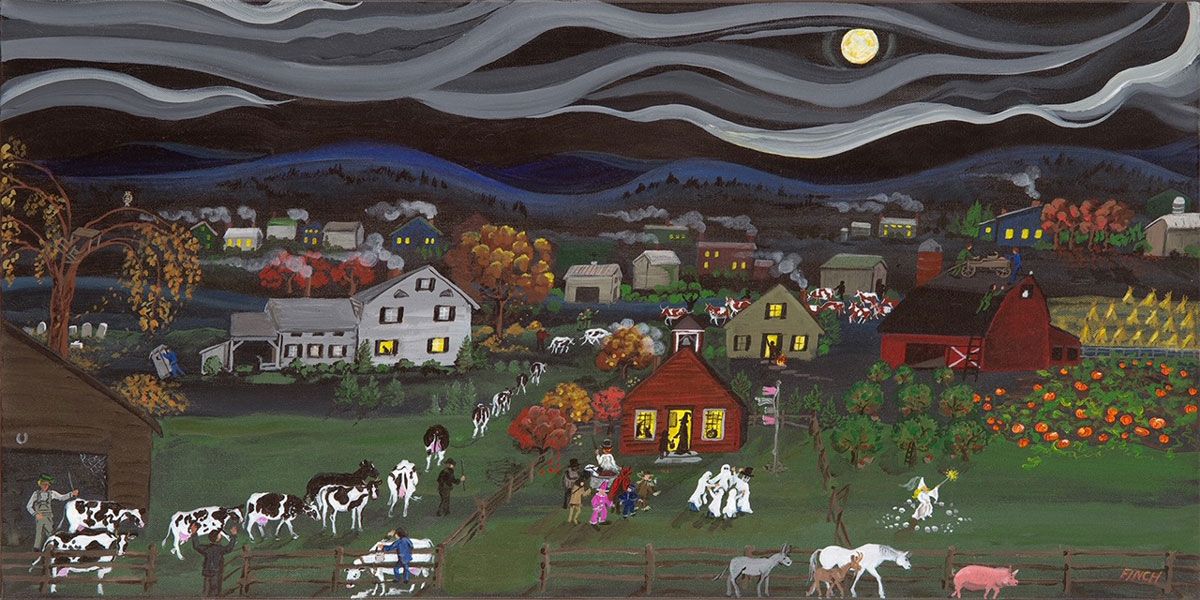
"Halloween Hi Jinks"
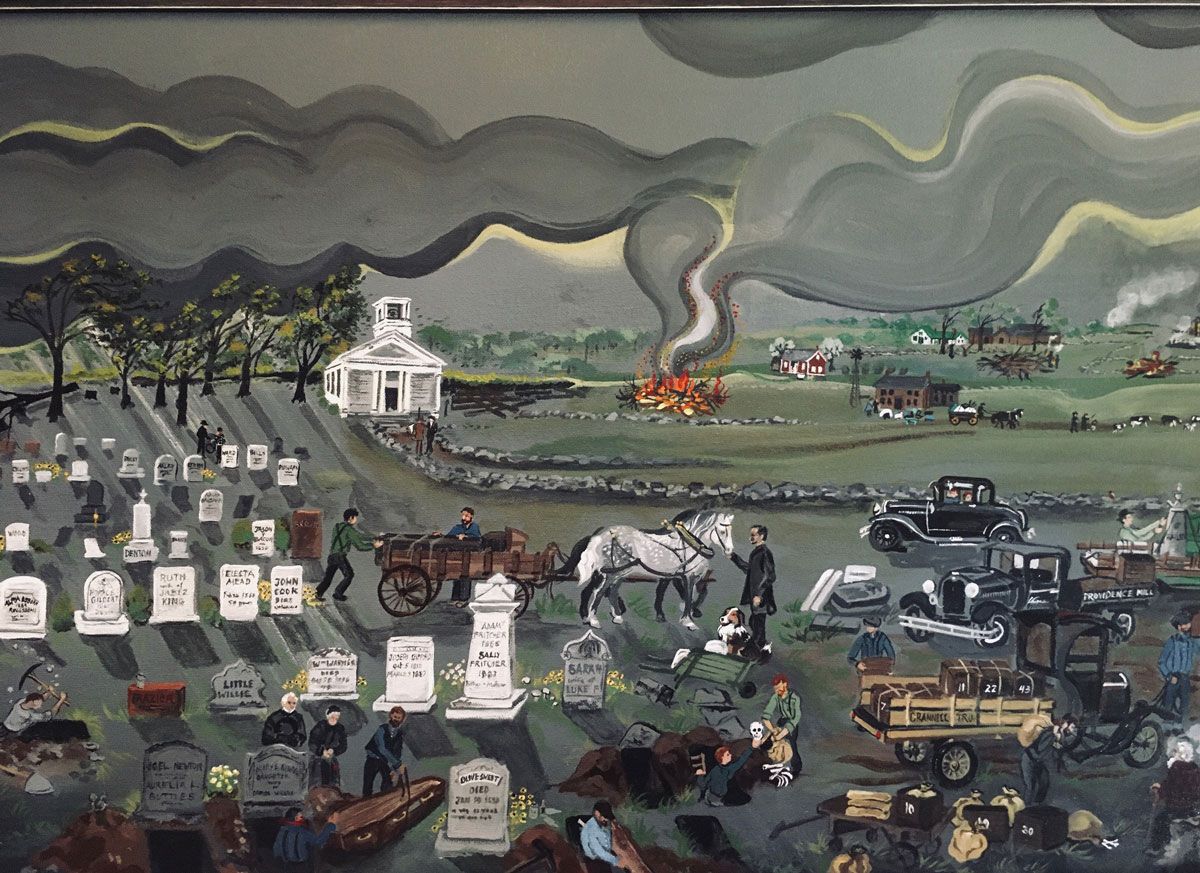
"Boneyard Gang"
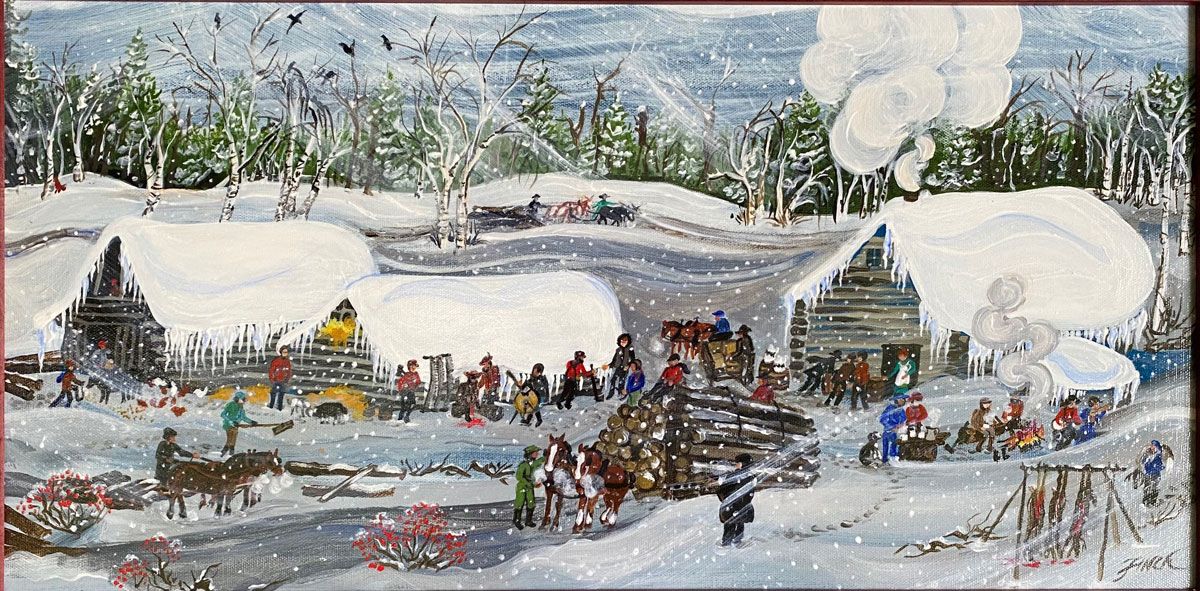
"Adirondack Lumberjack Camp"
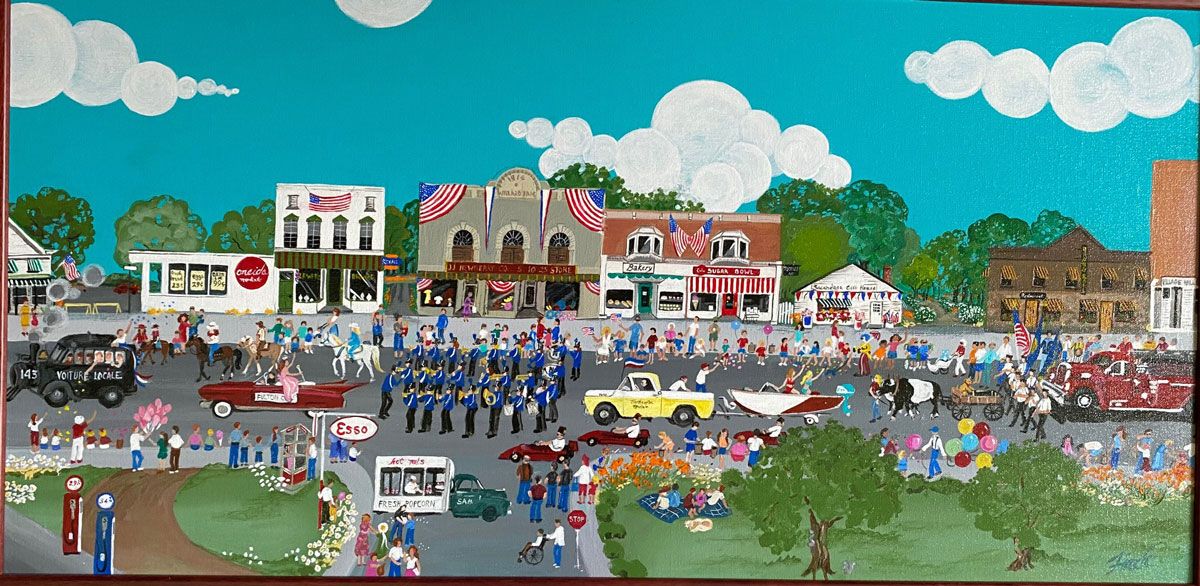
"The Doins"
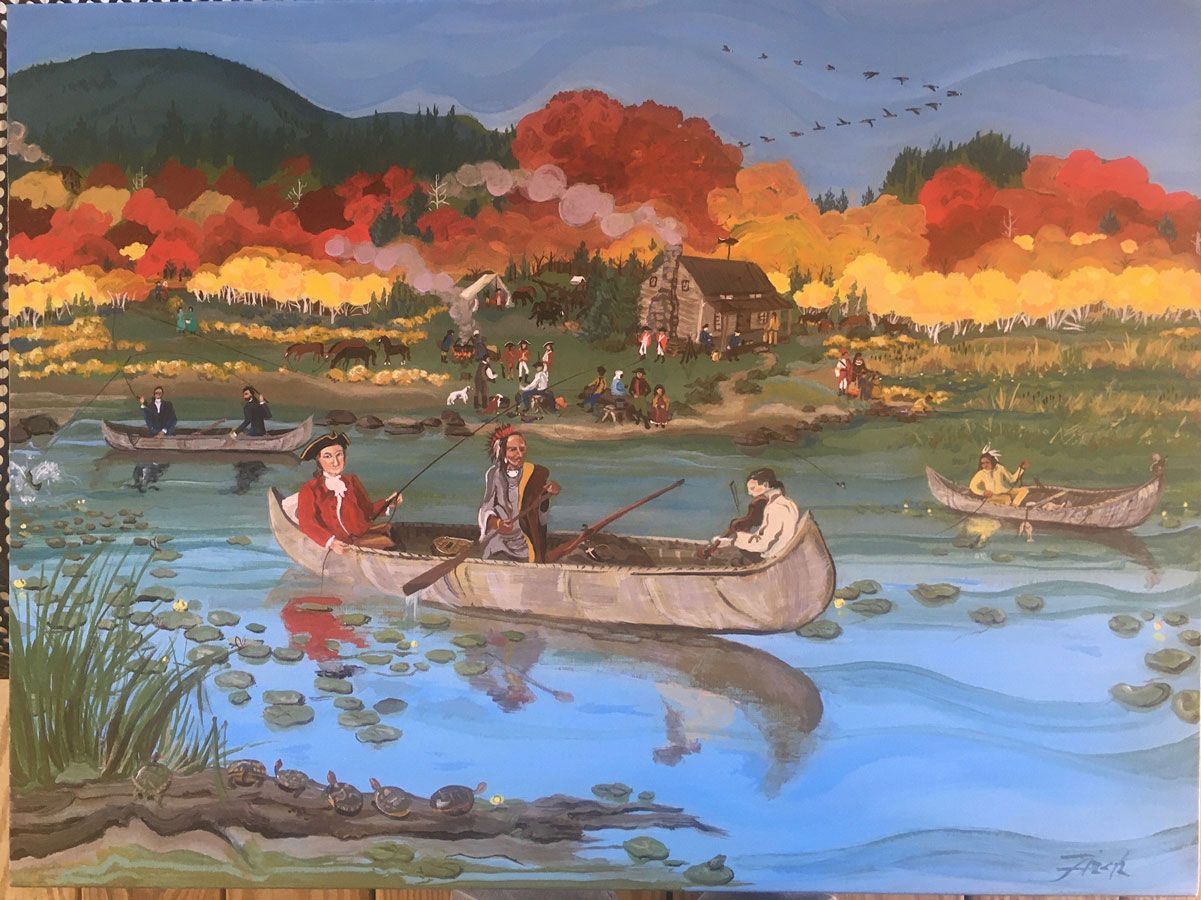
"Fish House"
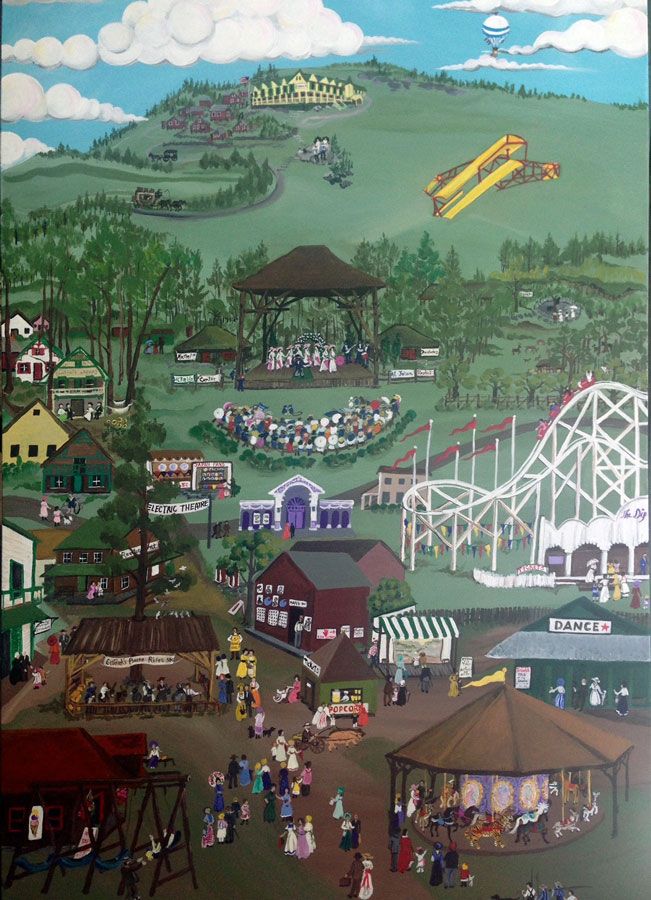
"The Midway"
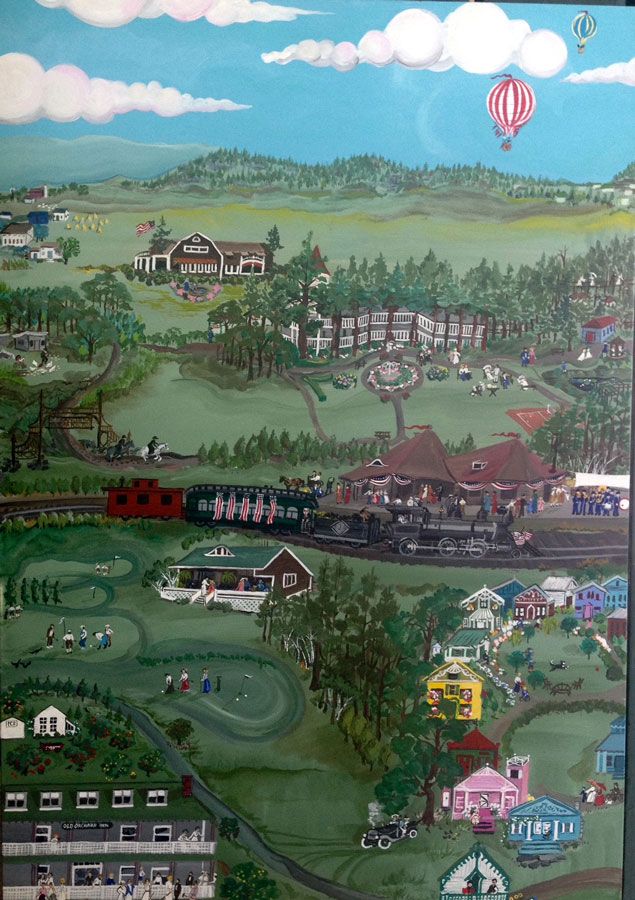
"The Station"
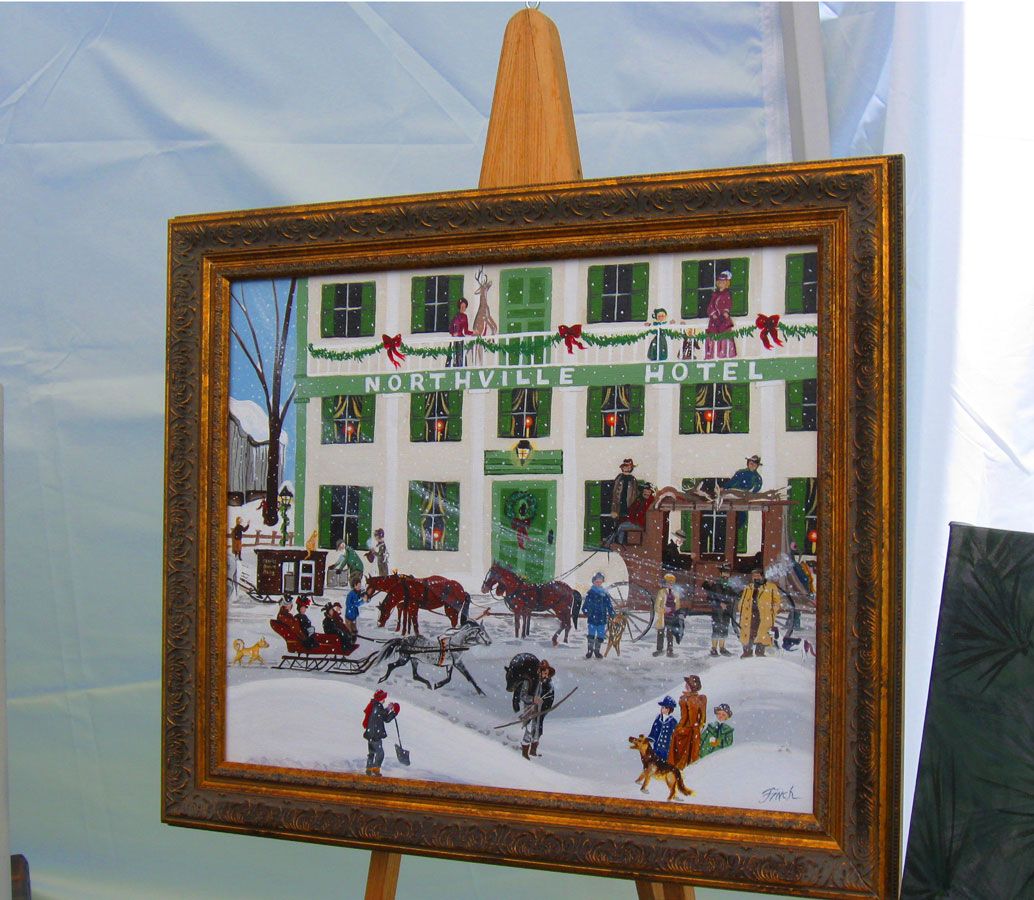
"Northville Hotel"
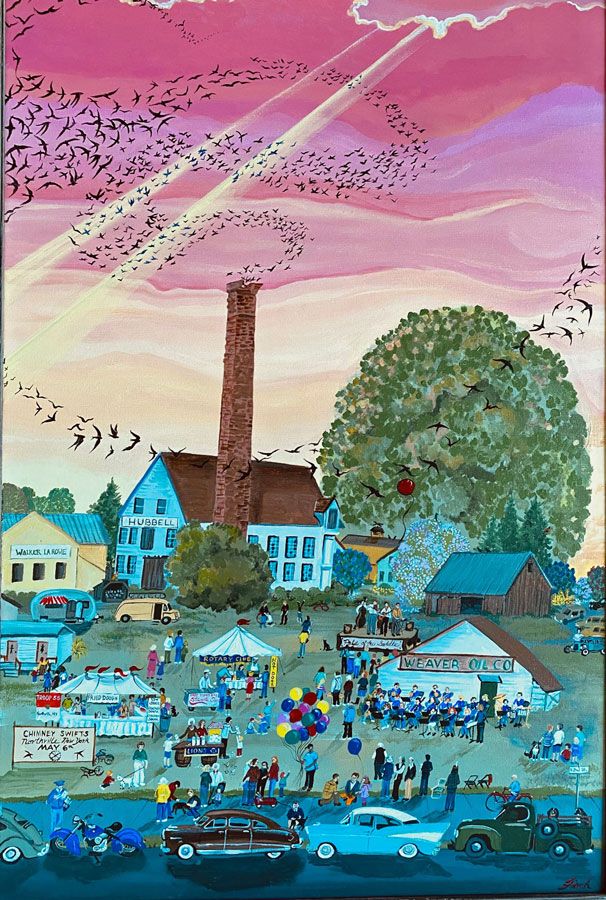
"Swifts Return"
